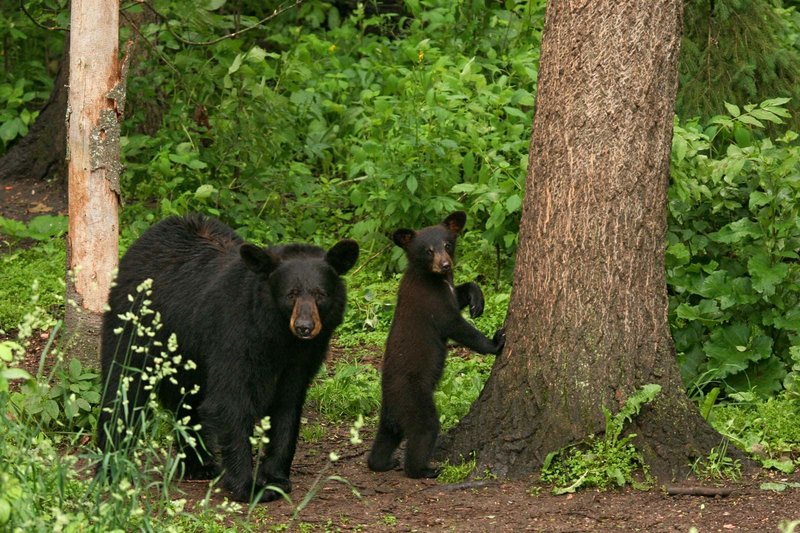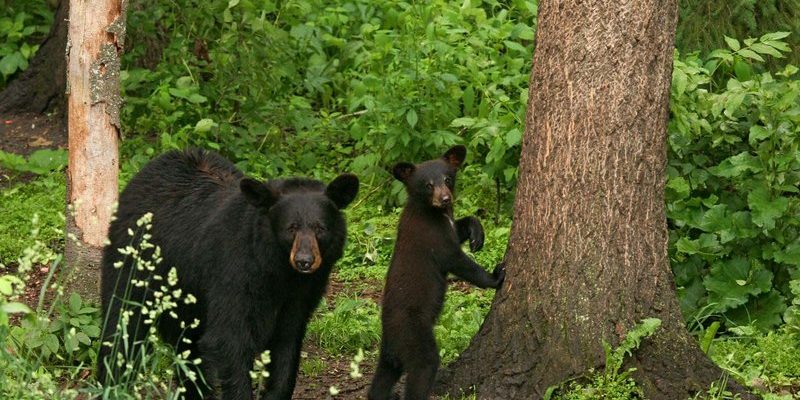
Imagine being dropped into a blizzard without a warm coat or the ability to find food. That’s what many bears face when winter rolls around. Fortunately, they’re built for survival. Bears, like the brown bear or the polar bear, have thick fur, a layer of fat, and amazing instincts that help them navigate and thrive in their often brutal habitats. In this article, we’ll explore the various ways these incredible animals adapt to survive in harsh environments, ensuring they can continue to roam the wild.
Thick Fur and Insulation
One of the most noticeable features of bears is their thick fur coat. This isn’t just for show—it’s a critical part of how they survive in cold climates. The fur provides insulation, trapping air and keeping warmth close to their bodies. When you think about it, it’s like wearing a cozy down jacket all winter.
Bears have a double layer of fur. The outer layer consists of guard hairs that repel water and wind, while the undercoat, which is softer and denser, provides insulation. This combination helps them stay warm even in biting cold. Polar bears, in particular, have a special adaptation: their fur appears white but is actually transparent. This helps them blend into their snowy surroundings, making them less visible to prey.
But it’s not just about staying warm. This thick fur also protects bears from harsh weather conditions, such as snow, rain, and even ice. Imagine trudging through snow up to your knees; those furry paws help bears navigate easily across such terrains.
Fat Reserves for Energy
Have you ever wondered why bears gain weight before winter? Well, they enter a phase called hyperphagia, where they eat nearly continuously to bulk up. The reason for this is simple: fat is an essential energy source during hibernation. Bears can gain hundreds of pounds in preparation for the cold months ahead, which is vital for their survival.
During hibernation, bears enter a state where their metabolism slows significantly, allowing them to survive on their fat reserves. While they’re snoozing away, their body is still hard at work. It continues to burn fat to provide energy for vital functions like heartbeats and breathing. Without these fat reserves, bears would struggle to survive through the long, food-scarce winter months.
Interestingly, this fat not only supplies energy but also acts as insulation. The layer of subcutaneous fat locks in warmth, making it less likely for bears to freeze when temperatures plummet. It’s like having built-in heating to keep them cozy when everything around them is icy and bleak.
Hibernation: A Strategic Survival Mechanism
Hibernation is one of the most fascinating survival strategies bears possess. Unlike many other animals that enter a deep sleep, bears can wake up and move around occasionally during this period. They essentially enter a state of torpor, where their heart rate slows down, and they use energy sparingly.
During hibernation, bears don’t eat, drink, or defecate. Instead, their bodies recycle waste and break down fat stores. This remarkable adaptation allows them to survive for several months in complete dormancy. You could think of it as a high-tech energy-saving mode. If you’ve ever wished you could hibernate through winter, bears have already figured out how to do it.
The length of hibernation varies depending on the bear species and the environment. While some bears may hibernate for up to seven months, others may wake up earlier if the weather warms. This adaptability helps bears respond to changing environmental conditions, ensuring they survive even when their habitats become harsh.
Diet and Foraging Skills
Bears are omnivores, meaning they eat a mixed diet that includes both plants and animals. This flexibility helps them thrive in challenging environments where food is scarce. Depending on the season, a bear’s diet can range from berries and nuts to fish and small mammals. As any good forager knows, having a variety of food sources is key to surviving tough times.
In the spring and summer, bears actively seek out high-energy foods to help build fat reserves. They’re skilled at finding food, often using their sense of smell, which is about seven times better than a bloodhound’s. This keen sense allows them to locate food buried under snow or up in trees, searching for nuts or fruits that might be out of reach.
Something to consider: when food sources dwindle in colder months, bears have an impressive strategy for survival. They might travel long distances to find new foraging grounds or even scavenge from other animals. This adaptability in their diet ensures that bears can find something to eat, even in harsh and barren landscapes, giving them an edge when it comes to surviving the difficult seasons.
Social Structure and Territory
Bears are often solitary animals, but their social structures can play a crucial role in survival, especially in harsh environments. By establishing territories, bears can reduce competition for food and mating opportunities. Each bear has a unique home range that they defend, ensuring they have access to essential resources.
When food is plentiful, you might find bears gathering in certain areas, like salmon streams during spawning season. Here, they can share space without fighting, capitalizing on the abundance of food. Conversely, as winter approaches and resources dwindle, these territories are essential for individual survival.
Young bears often learn survival skills from their mothers during their formative years. They learn how to find food, navigate their environment, and avoid potential dangers. This knowledge is vital when they eventually leave to establish their own territories.
Adaptation to Diverse Environments
Bears can thrive in a wide range of habitats, from the Arctic tundra to temperate forests. One of their greatest survival traits is their resilience and ability to adapt. For example, polar bears have evolved to live in freezing temperatures, relying on sea ice to hunt seals. Their white fur camouflage helps them blend with their environment, making it easier to go unnoticed by both prey and potential threats.
On the other hand, black bears adapt well to forested areas and mountainous terrains. They can also be found in suburban areas, where they forage through trash cans and gardens. This versatility allows them to survive even when their natural habitats are disrupted by human activity.
Here’s the thing: the adaptability of bears is a testament to the incredible ways life can evolve to meet challenges. Whether they’re swimming in icy waters or climbing trees in the forest, bears showcase a resilience that’s inspiring.
Bears are remarkable animals that have developed an array of strategies to survive in some of the harshest environments on the planet. From their thick fur and stored fat to their impressive foraging skills and social structures, every aspect of their existence is finely tuned to help them endure challenges. As we learn more about these magnificent creatures, we can appreciate the complex interplay between their adaptations and the environments they inhabit.
Understanding how bears survive can also inspire us to protect their habitats and the natural world around us. After all, their survival is a sign of a healthy ecosystem, which benefits all of us. So, the next time you think of a bear, remember all the incredible ways it adapts and thrives— no matter how tough things get.

